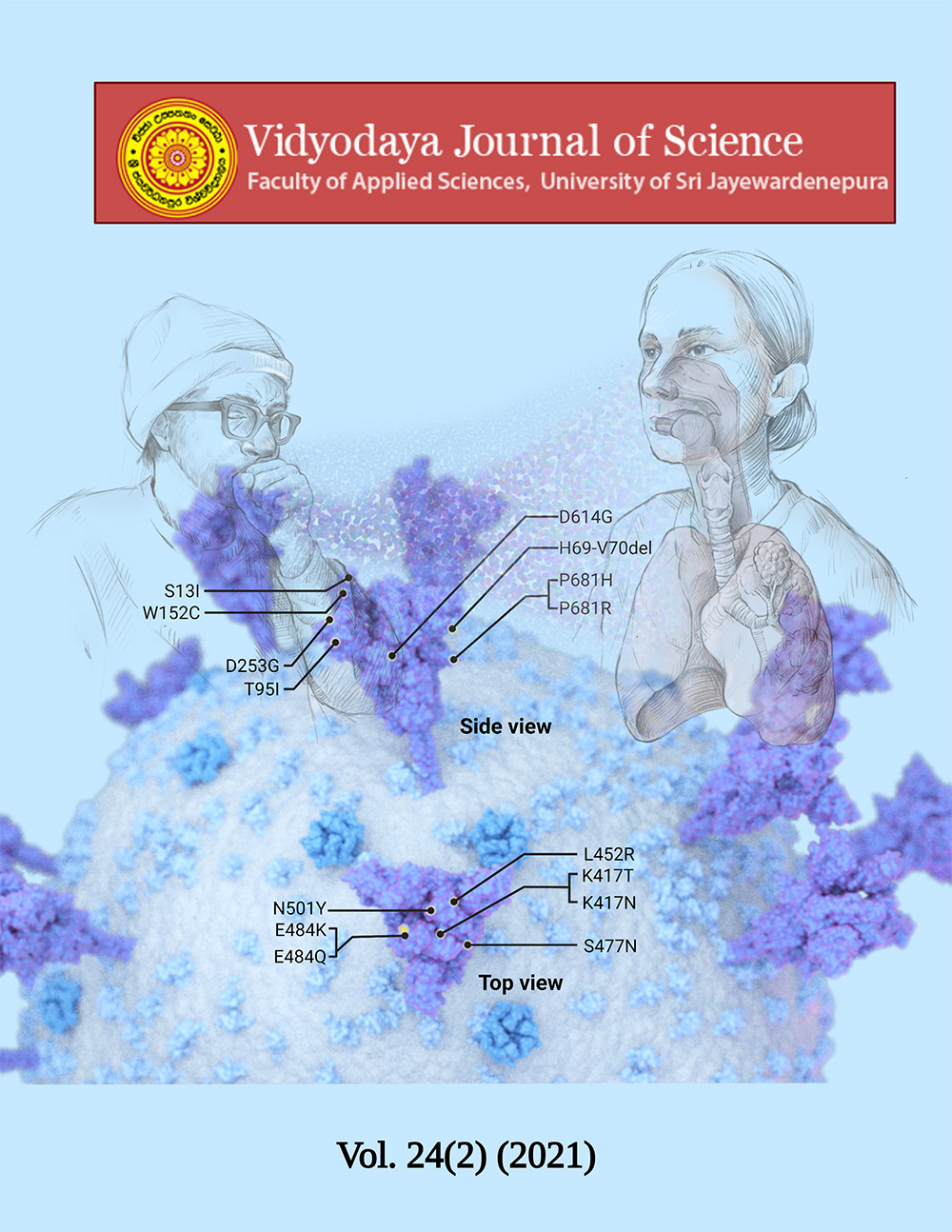Evaluation of salt content and effectiveness of excessive salt reduction methods in selected commercially available dried fish types in Sri Lanka
DOI:
https://doi.org/10.31357/vjs.v24i02.5415Abstract
High salt intake elevates the risk of non-communicable diseases such as high blood pressure, cardiovascular diseases and stroke worldwide. Sri Lanka has recorded in 2010 as the country with highest average fish & fish products consumption in South Asia. In the current study, salt in ten types of commonly available dried fish namely; sprats, prawns, smoothbelly sardinella, queen fish, cat fish, sail fish, shark, skipjack tuna, Bombay duck and trenched sardinella was analyzed and determined salt reduction methods with minimal protein loss. Four salt reduction methods were tested; Method 1: washed with water at Room Temperature (RT) for five times; Method 2: washed with water for five times at RT and kept in hot water for 5min; Method 3: washed with water for five times at RT and boiled for 5min; Method 4: washed with water for five times at RT and kept in coconut water for 5min. Using Volhard method, sodium chloride was analyzed while protein was determined using Kjeldahl method. All four methods showed significant reduction of salt level in tested dried fish (p < 0.05). Among the tested salt reduction methods, Method 3 showed the highest salt reduction for all types of dried fish except smoothbelly sardinella and cat fish.The highest salt mean value of 28.8% was recorded in queen fish and the lowest mean value of 12.8% was recorded in smoothbelly sardinella. The highest protein loss was recorded in Method 3. To reduce considerable amount of salt, the easiest and fairly effective method is method 1 except for prawns and Shark. Although higher salt reduction showed in method 2 and 3, they are not recommended due to high protein loss, high energy expenditure and reduction of freshness of dried fish. Method 4 can be applied for all dried fish types because it is economical and reduces considerable amount of salt, removes less amount of protein comparatively. The results revealed that all tested dried fish except smoothbelly sardinella contain significantly high amount of salt (p < 0.05) than the standard value specified (12%) by the Sri Lanka Standards Institution (SLSI).
Keywords: Dried fish, protein loss, salt-intake, salt reduction, non-communicable diseases




